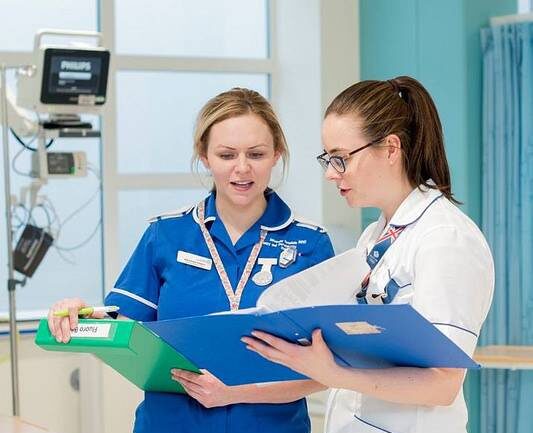
What’s It Like to Be a Doctor in the Midwest?
Medicine is medicine the world over, but if you studied, interned, and completed your residency in a big coastal city, then you might wonder what it’s like for your colleagues in the Midwest. Is life slower-paced? Is the money good? Is making the move worthwhile?
The Midwest (and rural areas across the nation, for that matter) is desperately in need of more doctors. The National Rural Health Association says that although a quarter of the U.S. lives in “rural” areas, only 10 percent of doctors practice in the same setting. And as the general shortage of doctors continues to grow, places like the Midwest will feel it more keenly.
What’s it like to practice medicine in the Midwest? As it turns out, it presents some of the same healthcare challenges and opportunities that you already experience elsewhere in the country.
Doctors in the Midwest Need More Skills
When you practice in a coastal metropolitan area, you’re likely never more than a short journey from one of the best specialists in the country. Sometimes they’re even in the same building. As a result, you can rely on an extensive network of colleagues and professionals to consult with and to direct patients to — often with a click of a button. When you live and practice in most parts of the Midwest (bar Chicagoland), however, you don’t always have that option.
Physicians in the Midwest say that they find the scope of their practice is much wider than it needs to be elsewhere, and the depth of knowledge required is deeper than it needs to be elsewhere. You can consult research articles and email doctors further afield from your local office, but you won’t meet the world’s top specialists in your hospital’s physician lounge. You’re well off if you have a decent ER in the area, enough family physicians to take time off, and a general surgeon. And because a substantial number of your patients won’t or can’t afford to travel, you need to be able to treat more conditions yourself while still using the best available, evidence-based medicine.
Interviews from a new documentary, “The New Country Doctor,” also suggest that it’s not enough to be the best-of-the-best in terms of your medical skills. You also need to be excellent at making connections. Not only do your professional connections take more work, but you’ll need to develop new resources in unexpected places. You may also need to have the skills to seek out and engage with community resources as you connect patients with county or state mental health resources, housing resources, and even food programs. Given the ongoing opioid epidemic, you will also need to get creative when hunting down resources for chronic pain sufferers.
Doctors Enjoy Lower Cost of Living and Longer Hours
States like Indiana are famous for low cost of living: even Indianapolis is incredibly affordable, particularly for a capital city. As a doctor in a Midwestern state, you’ll find that it’s much easier to afford rent or a mortgage, and even pay off your student debt much faster as a result. You may even qualify for student loan forgiveness programs designed to encourage doctors to practice in underserved areas.
At the same time, you may still work longer hours than you might in a highly-structured environment elsewhere. Outside of the metropolitan areas of Chicago, St. Louis, and Minneapolis-St Paul, patient populations not only have fewer health care options, but the agricultural community often presents offbeat schedules. You may find yourself offering evening appointments and making housecalls. Additionally, you may work in a health care system with less support staff than you’re used to, leaving more of the administrative up to you and increasing your work week that way.
Your hours may even extend more stealthily than simply staying open later. Small towns, in particular, physicians are friends, coworkers, and family members. The interpersonal dynamics of living in small to medium Midwestern towns can mean that you’re on duty both at the clinic and when out to eat with your spouse. As noted by Kathleen Miller in the AMA Journal of Ethics, the overlapping roles in your community mean you are very visible, privacy is hard to find, and it can be hard to separate your personal and professional life, which can take its toll on your marriage and family relationships.
Doctors Learn to Prioritize Technology
It can be strange to fathom, but when you work in small towns, you aren’t just missing the latest technology. You may not even have full-time access to an MRI machine, much less the access to medical artificial intelligence technology. Without the basics covered, you need to learn to prioritize your technology and insist on the basics.
Out here, technology in medicine isn’t just about increasing the hospital’s ROI or competing with another health organization. Technology can transform patient care for both rural and urban patients in the Midwest by helping them avoid long, expensive trips to high-end facilities.
Telemedicine is one thing that most rural — and even suburban — doctors in the region can and often have to advocate for. Depending on where you settle, it may not even be available yet. But telehealth can improve both preventative care and emergency care, as well as mental health care through the help of social workers. For example, if you suspect a patient is presenting symptoms of a stroke, you can teleconference with a neurologist and get them their anti-clotting medication ASAP and therefore improving patient outcomes.
Practicing Medicine in the Midwest Presents Challenges and Opportunities
Practicing medicine in the Midwest comes with new challenges that push you both as a medical professional and as a person.
You probably won’t get to enjoy the same resources that come with practicing in a large, well-funded hospital, but you will have a chance to make a real difference in people’s lives and become an essential part of a community. You can even be part of a systemic change that relieves the health inequities that rural Americans face every day.






